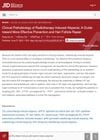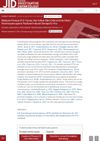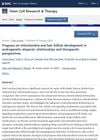PPARγ Signaling Modulation Protects From Hair Follicle Bulge Stem Cell Damage and Cyclophosphamide-Induced Hair Follicle Cytotoxicity
September 2019
in “
The journal of investigative dermatology/Journal of investigative dermatology
”
TLDR PPARγ signaling modulation can protect hair follicle stem cells from chemotherapy-induced damage.
The study investigated the protective effects of PPARγ signaling modulation on hair follicle bulge stem cells (HFeSCs) against cyclophosphamide-induced damage, which can lead to permanent chemotherapy-induced alopecia (pCIA). Ex vivo treatment with the cyclophosphamide metabolite 4HC caused hair follicle cytotoxicity, apoptosis of CK15+ bulge cells, and epithelial-mesenchymal transition (EMT). Pretreatment with NAC-GED-0507-Levo (NACGED), a PPARγ modulator, provided relative protection against 4HC-induced cytotoxicity and EMT. The findings suggested that pCIA irreversibility might result from apoptosis and EMT-mediated destruction of CK15+ bulge eSCs, and that PPARγ signaling modulation could be a potential strategy for managing permanent hair loss in chemotherapy-treated patients.





